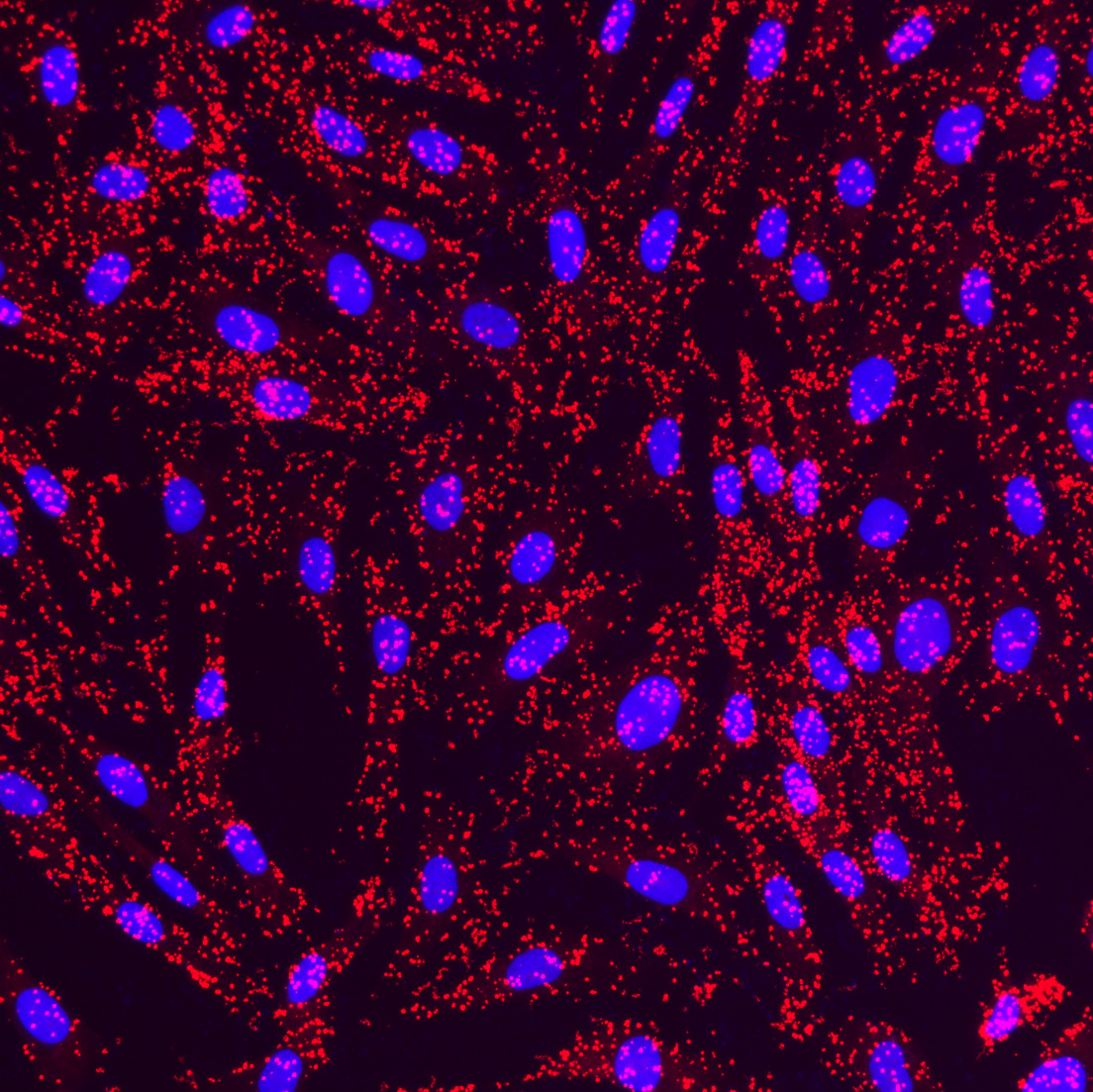Description
The Naveni pY PDGFR-beta is an in situ proximity ligation assay kit for fluorescence detection of phosphorylated PDGRF-beta. The kit gives a high signal-to-noise ratio and is easily quantifiable, contrary to traditional immunofluorescence. The kit is based on our Naveni® Proximity Ligation Technology, with two Navenibodies conjugated to proprietary oligo arms. The technology ensures specific and sensitive detection; learn more about our Naveni® Proximity Ligation Technology.
The Navenibodies in the Naveni pY PDGFR-beta kits target two epitopes on the phosphorylated PDGFR-beta. One Navenibody targets the protein close to the cytoplasmic C-terminal, and the other Navenibody interacts with phosphorylated tyrosine residues. Probes in close proximity will give rise to a strong and distinct signal, creating a specific and sensitive detection method for phosphorylated PDGRF-beta. The kit is optimized for cell samples, and everything is included.
Product code: NPT.PDGFRB
Included in the kit:
- Navenibody targeting cytoplasmic human PDGFR-beta protein
- Navenibody targeting phosphorylated tyrosine residues
- Detection fluorophore TEX615
- Buffers for blocking and dilutions, and all detection reagents
- The Navenibody solution has a working volume of 4000µl (sufficient for approx. 100 reactions)
User instructions
Detection of phosphorylated PDGFR-beta – now with high signal to noise ratio
Platelet-derived growth factors (PDGFs) and their receptors (PDGFRs) are critical regulators of mesenchymal cells in the tumor microenvironment and have been associated with unfavorable outcome in several cancers. PDGFR-beta belongs to the RTK receptor family and is involved in several intracellular signaling pathways. The detection of phosphorylated PDGFR-beta using Naveni pY PDGFR beta results in a significantly higher signal-to-noise ratio than traditional IF and the fluorescent dot readout is easily quantifiable.
Naveni PTM
Posttranslational modification (PTM), such as tyrosine phosphorylation (pTyr, pY) of proteins, is essential for several cellular functions and pathophysiological processes. The Naveni PTM product line includes kits for detecting tyrosine phosphorylation of RTKs. Western blot has traditionally been used to study phosphorylation of proteins, but specific tools for quantifying phosphorylation of RTKs in situ have been requested for a long time. The Naveni PTM kits now make it possible to detect and quantify low-abundant phosphorylated RTKs in situ with single-cell resolution.
Keywords: Proximity Ligation Assay, Phosphorylation, phosphorylated proteins, posttranslational modification (PTM), in situ, receptor tyrosine kinases (RTKs), fluorescence, western blot, validated antibodies
